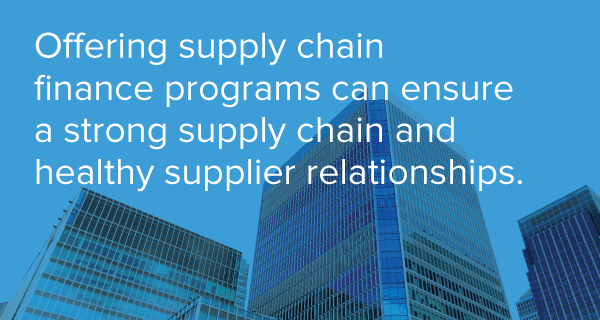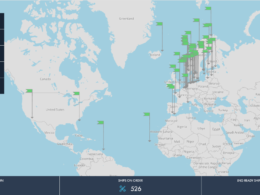Conscious consumers are looking more and more at what a brand represents. They view products as an extension of their own identity, and tend to select brands that are aligned with their own principles. A recent study conducted by research company YouGov and GT Nexus concluded that a combined 34% of millennial consumers turned against their preferred brands due to either the brand not being eco-friendly, or for it not treating its workers well. These are supply chain issues.
What this means is that in today’s world, the brands with the strongest end-to-end supply chains will prevail. What determines supply chain strength? There are many factors, but one in particular–the way money flows in the supply chain–can especially cripple or strengthen the entire supply chain.
Businesses need capital to keep supply chains moving by covering the cost of essentials like labour and materials. Buyers that squeeze suppliers on costs and payment terms create instability in the supply chain. Under financial strain, suppliers might start pushing their workers too hard or delay environmental improvement projects to keep the production going. All too often this results in high-profile ethical scandals, which eviscerate brands. And sometimes, financially squeezing suppliers results in their bankruptcy, which punches a large hole in a buyer’s own supply chain and is ultimately self-destructive.
Luckily, all those scenarios are avoidable. By offering supply chain finance programs, for example, that enable suppliers to be paid early at competitive rates based on the buyer’s credit, brands can ensure a strong supply chain and foster a healthy supplier relationship.
But why stop there? Why not communicate your vision as an organisation, so that your supply chain is working towards your values, and serves as an ambassador of your brand?
The same incentive-driven vision and mission principles used within a corporation can be applied to the supply chain as well. Companies like Levi’s, Nike, and PUMA have deployed supplier financing programs with the World Bank’s IFC to deliver low-cost access to capital.
These innovative programs offer financial incentives for suppliers to improve environmental, health and safety, and social standards.













